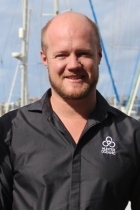Implementing PMS Solutions for Yachts in Build is the New Norm

Since 2013 the superyacht industry has seen a steady increase in the global orders of new build yachts. Yachts in construction often adopt the latest technology, new ideas and designs. New builds are a chance to improve on the way things have been done in the past and give owners and build engineers the opportunity to fulfil their wildest design and engineering dreams.
There are many examples, from the indoor tennis courts recently achieved for the 98m MY Aviva by Abeking & Rasmussen, to the more subtle but equally game-changing design of the newly delivered MY Serenity from Nordhavn Yachts. Every new build hitting the water is a chance to raise the bar and for a new norm to be created. At Seahub we’re lucky to work with some of the most progressive and forwarding thinking yachts in the industry and we look continually to improve the way things are done and support new innovation.
The deployment of planned maintenance systems (PMS) during the design and build phase is no longer a ‘nice to have’ but the new norm. By implementing a system during this phase, captains and engineers are going a long way towards correctly maintaining their vessel from day one. In turn that positively impacts the availability of warranties and reduces the likelihood of unplanned breakdowns.
We had the exciting opportunity to work with Captain Zach Gallagher of MY Serenity (below) over the past six months throughout various cycles of the build. The project was an example of successful collaboration between Seahub, the shipyard and the commissioning captain. We loved it. The yacht is a beauty!
We caught up with Captain Zach to hear how he’s managing MY Serenity with Seahub and here’s what he had to say.
Matt Hyde: Tell us a little about the new build project MY Serenity from Nordhavn Yachts?
Captain Zach: Serenity was conceived by an owner who wanted to mix comfort and style, fishing and exploring, and long-range cruising with comfort. This 30m boat packs a lot of punch inside, redundant systems from bridge electronics to machinery spaces, state of the art remote control systems for cameras, AV, lighting, etc. She has a full-on fishing cockpit, four live wells, in-deck kill boxes and freezers, a galley that rivals 40m yachts, five state rooms including a private master deck and a firepit.
Serenity was delivered just over three months ago and we have covered just under 7,000NM and are approaching our 1,000hr service on the mains. With a 3000NM cruising range, it’s great to be out here on a boat that is finally being used for what she was built for!

Matt: What do you see as the key benefits of having implemented a planned maintenance system during the build phase of Serenity?
Captain Zach: One of the key benefits to implementing software like this during the commissioning phase of Serenity was the chance to connect Nordhavn with Seahub. The two were able to provide each other with key information like system drawings, lists of build equipment, purchase dates, warranty information and much more, making it possible to take full advantage of what Seahub offers. Also, the fact that we have a digital full-service record from day one of the boat will go a long way, whether it be for warranty or re-sale.
Matt: How did Seahub shape up against other software providers for your requirements? Was there something in particular that caught your eye?
Captain Zach: When I was first hired for Serenity, I knew that having a good reliable maintenance software is something I wanted to get into. I knew it had to be flexible, offer more than just an excel spreadsheet with a fancy name at the top. I wanted integrated digital manuals, digital inventory, a long term view of planned maintenance and the ability to track warranties/certificates/crew documents.
During my decision phase, I spent weeks opening up trial accounts with different vendors, avoiding those that I have used in the past, and trying to picture how each would be used. Seahub really caught my eye with the ease of use, the layout and accessibility of all the information, and unique features like fluid analysis and projects. All of these things combined with the support and open communication between the Seahub team made this decision a no brainer.

Matt: How has Seahub made your job easier as the captain, also for the engineer?
Captain Zach: Having been in the industry for a while now, I saw first-hand how engineers were struggling when they step on a vessel, with little to no handover, spending months going through systems maintenance not knowing where the previous engineer left off. From a captain’s standpoint, having a maintenance software like this, implemented from the get-go is a no brainer.
We now have a full-service record of all systems onboard dating back to the launch of the vessel! It makes the scheduling of future jobs much easier using things like calendar view, being able to plan out services while in certain ports or around trips. It takes the edge off having to second guess services, lug around heavy paper manuals, and it’s a lot less stressful trying to maintain all the systems properly without a dedicated engineer onboard.
Matt: How have you found the support after using Seahub for a few months?
Captain Zach: The support from the Seahub team has been great, from the initial contact to follow ups and updates. During the commissioning stages of Seahub it was invaluable having the team onboard first hand to help go through systems and manuals while I was busy with shipbuilders and contractors commissioning the vessel!


Post your comment
You cannot post comments until you have logged in.
Login to post a commentComments
No one has commented on this page yet.
RSS feed for comments on this page | RSS feed for all comments